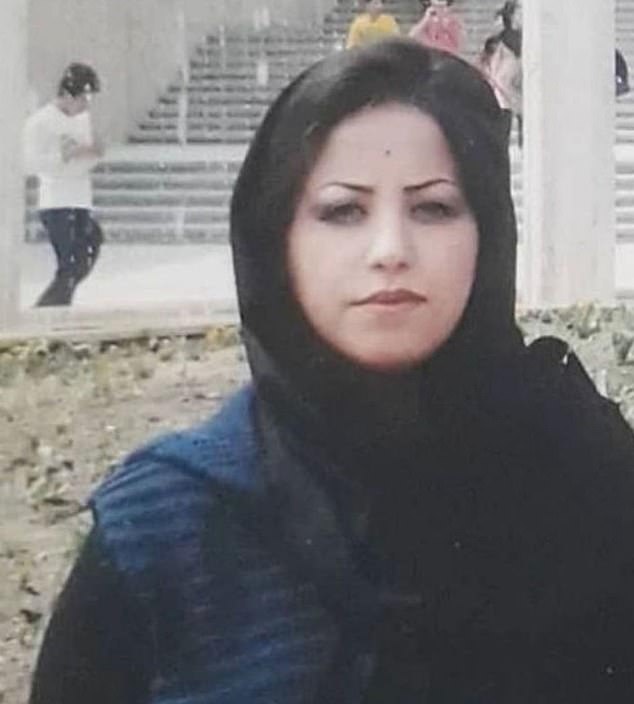Iranian child bride forced to marry at 15 is hanged a decade after murdering her husband who had abused her for years
An Iranian child bride who was forced to marry at the age of 15 has been hanged in Iran for killing her husband who had abused her for years.
Samira Sabzian, 29, who had spent the past decade in prison, was executed at dawn at Ghezel Hesar prison in Tehran's Karaj city, the Norway-based Iran Human Rights Group (IHR) said.
Sabzian, from the city of Khorramabad in western Iran, was forced to marry her husband at the age of 15. In the years that followed, the girl became a victim of domestic violence, her relatives said.
After four years of abuse, the mother-of-two murdered her husband in 2013 when she was 19 years old and was sent to prison where she remained for ten years.
Today, Sabzian was executed by the Iranian regime – despite pleas from Britain, the UN and international human rights organizations to spare the child bride.

Samira Sabzian, 29, who had spent the past decade in prison, was executed at dawn at Ghezel Hesar prison in Tehran's Karaj city, the Norway-based Iran Human Rights Group (IHR) said.
During her detention, Sabzian had refused to meet her two children in prison, as one was still a newborn when she was arrested.
But knowing she would be executed within days, Sabzian met them for the first time in a decade in an emotional reunion.
Sabzian was hanged at dawn today, with rights groups criticizing Iran's sharia-based killing laws, which are based on the principle of 'qesas' (retaliation in kind).
They say the laws do not take into account potentially mitigating factors such as abuse or domestic violence, as was the case with Sabzian.
Under Iran's criminal code, those accused of murder are sentenced to death regardless of the circumstances surrounding the crime.
The victim's family can choose whether to accept the death penalty or ask for financial compensation. But in Sabzian's case, her husband's parents asked for the death penalty.
IHR Director Mahmood Amiry-Moghaddam said: “Samira was a victim of years of gender apartheid, child marriage and domestic violence, and today she became a victim of the incompetent and corrupt regime's killing machine.
'A regime that has maintained itself solely by killing and spreading fear. Ali Khamenei and other leaders of the Islamic Republic must be held accountable for this crime.”
Amnesty International said it was 'shocked' by reports of the 'horrifying execution' and said the mother-of-two was 'subjected to forced and early marriage as a child'.
The office of the UN High Commissioner for Human Rights said it was “alarmed” by the execution and said Sabzian was forced to marry her husband at the age of 15.
“We once again urge Iran to impose a moratorium on all executions, with a view to abolishing the death penalty,” the report added.

Sabzian (photo center front), from the city of Khorramabad in western Iran, was forced to marry her husband at the age of 15. In the years that followed, the girl became a victim of domestic violence, her relatives said.
The execution has not yet been reported by the media in Iran.
Rights groups have raised alarm over the increase in executions in Iran this year, with at least 115 people put to death in November alone, according to Amnesty International.
“The international community should urgently call on the Iranian authorities to immediately impose an official moratorium on executions,” Amnesty said.
The British government had called on Iran to spare Sabzian's life.
“Samira is a victim of child marriage… Iran must stop its abhorrent treatment of women and girls,” junior Foreign Minister Tariq Ahmad said late Tuesday on X, formerly Twitter.
According to the IHL, eighteen women have been executed in Iran this year, including Samira Sabzian.
Iran has executed eight men in cases linked to the protests that broke out in September 2022, but rights groups claim the increase in hangings on all charges is intended to sow fear among the wider population.
According to the IHR, Iran executed 582 people in 2022, but this year the total is expected to be significantly higher.
